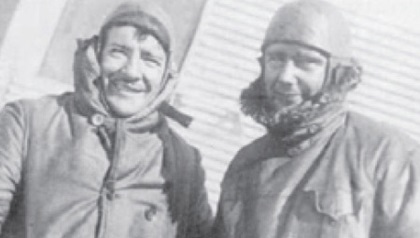Cirrus SR22
Instant best-seller

By 1999, Alan and brother Dale had created the clean-sheet, single-engine Cirrus SR20. It had an airframe parachute as well as good visibility and an ergonomic interior design. In 2001, Cirrus debuted the higher-powered SR22.
In 2003, this Cirrus SR22, N266CD, became the first single-engine piston aircraft with a “glass panel”—fully integrated avionics via computer screens—to be FAA certified. The primary flight display showed basic instrument information such as altitude and airspeed. The multifunction display showed moving maps, communication, and other data.
“As an all-new design with a fully integrated glass cockpit, the SR22 became the instant bestseller of its class, energizing the general aviation market,” said Dorothy Cochrane, aeronautics curator for the Smithsonian’s National Air and Space Museum. “This is what pilots had been waiting for.”
The National Air and Space Museum is currently creating the Thomas W. Haas “We All Fly” special section within the Smithsonian Institution featuring general aviation. Its planned opening is fall 2022.
Aviation History / 100 years ago
December 29-30, 1921
Setting FAI records
 Eddie Stinson and Lloyd W. Bertaud set an unrefueled manned endurance record, remaining aloft in a Junkers-Larsen JL-6 over Roosevelt Field outside Mineola, New York, for 26 hours, 19 minutes, 35 seconds. It is the first flight endurance record recognized by the Fédération Aéronautique Internationale (FAI). FAI is the world governing body for air sports—a range of aerial activities including air racing, aerobatics, aeromodeling, hang gliding, human-powered aircraft, parachuting, paragliding, and skydiving—and human spaceflight. It was founded on October 14, 1905, and is headquartered in Lausanne, Switzerland. FAI “maintains world records for aeronautical activities, including ballooning, aeromodeling, general aviation, and unmanned aerial vehicles (drones), as well as flights into space,” according to the website. The most recent powered airplane speed record flight was set August 1, 2021, by Swiss pilot Klaus Ohlmann, who has set more than 60 FAI records. fai.org
Eddie Stinson and Lloyd W. Bertaud set an unrefueled manned endurance record, remaining aloft in a Junkers-Larsen JL-6 over Roosevelt Field outside Mineola, New York, for 26 hours, 19 minutes, 35 seconds. It is the first flight endurance record recognized by the Fédération Aéronautique Internationale (FAI). FAI is the world governing body for air sports—a range of aerial activities including air racing, aerobatics, aeromodeling, hang gliding, human-powered aircraft, parachuting, paragliding, and skydiving—and human spaceflight. It was founded on October 14, 1905, and is headquartered in Lausanne, Switzerland. FAI “maintains world records for aeronautical activities, including ballooning, aeromodeling, general aviation, and unmanned aerial vehicles (drones), as well as flights into space,” according to the website. The most recent powered airplane speed record flight was set August 1, 2021, by Swiss pilot Klaus Ohlmann, who has set more than 60 FAI records. fai.org


